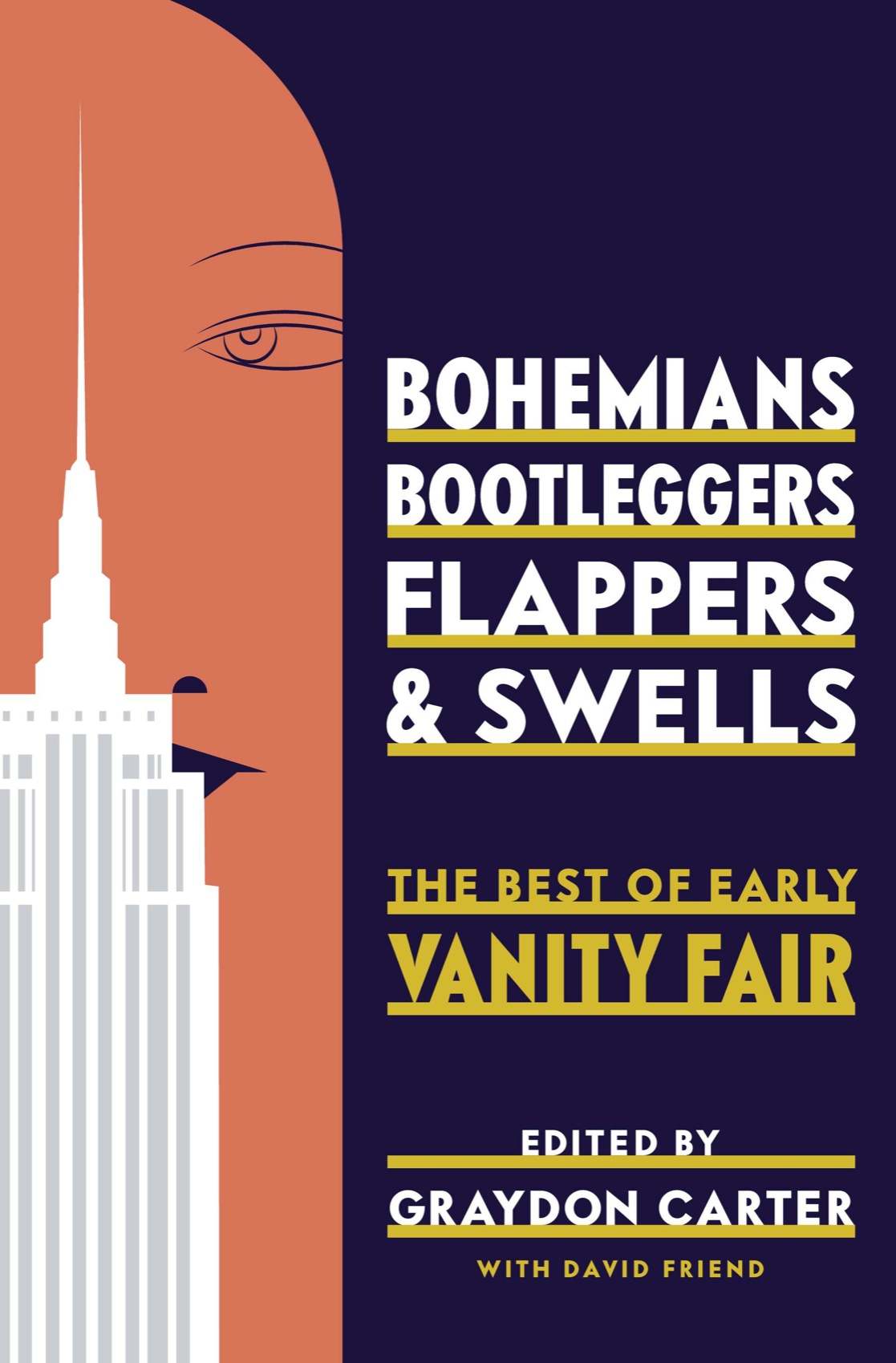
Bohemians, Bootleggers, Flappers, and Swells
The Best of Early Vanity Fair
کتاب های مرتبط
- اطلاعات
- نقد و بررسی
- دیدگاه کاربران
نقد و بررسی

Starred review from September 15, 2014
Billing itself as the “modern magazine” of the Jazz Age, Vanity Fair showcased writers as varied as Dorothy Parker and John Maynard Keynes in its early days. This fantastic anthology goes from 1913 to 1936 and features 72 essays, poems, and profiles, with very few duds. The topics covered include art, sports, drugs, and New York nightlife, as well as suffrage and Prohibition. The essays convey the era’s mood; the aftermath of the stock market crash registers particularly vividly. Meanwhile, the celebrity profiles, of the likes of Joan Crawford, Cole Porter, and Babe Ruth, come across as snappy time capsules of contemporary pop culture’s prehistory. The arch tone of the magazine’s humor is conveyed by Stephen Leacock’s “Are the Rich Happy?”, e.e. cummings’s “When Calvin Coolidge Laughed,” and Noël Coward’s parody “Memoirs of Court Favorites.” The chronological arrangement of selections results in some serendipitous juxtapositions—for instance, Walter Lippmann’s prescient essay on publicity is followed by columnist Walter Winchell’s “Primer on Broadway Slang.” At its best, as in Sherwood Anderson’s piece on the U.S. sesquicentennial, “Hello, Big Boy,” and Aldous Huxley’s striking “What, Exactly, Is Modern?” this volume epitomizes the idea of modernity in American cultural life before the Second World War.

September 15, 2014
A collection of a wide range of Vanity Fair articles ranging from 1914 to 1936, when the Great Depression forced the magazine to merge with Vogue. Some of these pieces are curiosities, while others capture a peculiar zeitgeist: America during wartime, the Roaring '20s, the Depression. Others simply provide an example of the range of powerhouse writers who contributed to a magazine that captured the tastes and travails of a certain kind of middle-class urbanite. One weakness comes in the editing. Current Vanity Fair editor Carter contributes the introduction, but the narrative presents the articles without commentary despite the fact that many of them call out for annotation to provide context. The book does include notes on contributors at the end, but these would have been better placed as part of a brief commentary before or after each selection. Regardless, there is a remarkable range to the pieces, whether in the form of celebrity profiles, essays on politics and economics, or snatches of journalistic observation from the era. Among the many eminent writers who provide contributions are F. Scott Fitzgerald, Thomas Wolfe, D.H. Lawrence, Gertrude Stein, P.G. Wodehouse, Edna St. Vincent Millay, Jean Cocteau, T.S. Eliot, Walter Winchell, Ford Madox Ford and Bertrand Russell. A series of Dorothy Parker "Hate Song" poems take aim at (and hit) targets ranging from men to actresses to relatives to offices. Not all of the pieces stand the test of time-the casual sexism of the era comes out loud and clear in many of the pieces, for example-but even those that do not hold up well serve as useful historical documents. Whether read from cover to cover or dipped into occasionally, this collection serves as a fine primer to one magazine's contribution to a golden age of American magazine writing.
COPYRIGHT(2014) Kirkus Reviews, ALL RIGHTS RESERVED.

November 15, 2014
Reading this compilation of writings published in Vanity Fair from the 1910s, 1920s, and 1930s is like sampling a box of chocolates on Valentine's Day: a delicious confection of satire, poetry, biographical sketches, humorous pieces, and thought-provoking commentary. In this "best of" collection, Carter (editor, Vanity Fair) and Friend (contributor, Vanity Fair) feature such literary luminaries of the day as F. Scott Fitzgerald, Dorothy Parker, Carl Sandburg, and T.S. Eliot. Essays by other important figures, including lawyer Clarence Darrow and philosopher Bertrand Russell also appear. With topics ranging from politics, war, the economy, the arts, literature, and entertainment, readers get a taste of what life was like during World War I, the Jazz Age, and the Great Depression. VERDICT This volume, along with the magazine's illustrated retrospective, Vanity Fair 100 Years (2013), is a must-have for readers of the publication and connoisseurs of the history, art, and literature of the modern era.--Donna Marie Smith, Palm Beach Cty. Lib. Syst., FL
Copyright 2014 Library Journal, LLC Used with permission.

October 15, 2014
Vanity Fair was the magazine that captured the pulse and verve of the Jazz Age and the Roaring Twenties in the city that was the epicenter of it all. This book gathers articles, fiction, commentary, and poetry published from 1913 to 1936 and written by now renowned authors, including F. Scott Fitzgerald, e. e. cummings, T. S. Eliot, P. G. Wodehouse, Noel Coward, Aldous Huxley, Langston Hughes, Djuna Barnes, Theodore Dreiser, and Thomas Wolfe. Vanity Fair editor Frank Crowninshield, a tastemaker, was among the founders of New York caf' society and worked with luminaries including Dorothy Parker, Robert Benchley, Robert Sherwood, and Edna St. Vincent Millay. Contributors and editors expounded on modern womanhood, the machine age, the arts, global conflict, and the cultural obsession with sports. The collection includes a detailed comparison of opium and hashish, sly invitations to bring your own liquor during Prohibition, a primer of Broadway slang, and a stock-market post mortem. These delightful period pieces reflecting the social mores of their time hold up in their innovation, style, and concern about modern life nearly a century later.(Reprinted with permission of Booklist, copyright 2014, American Library Association.)

























دیدگاه کاربران